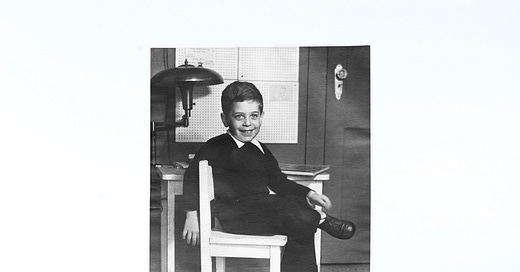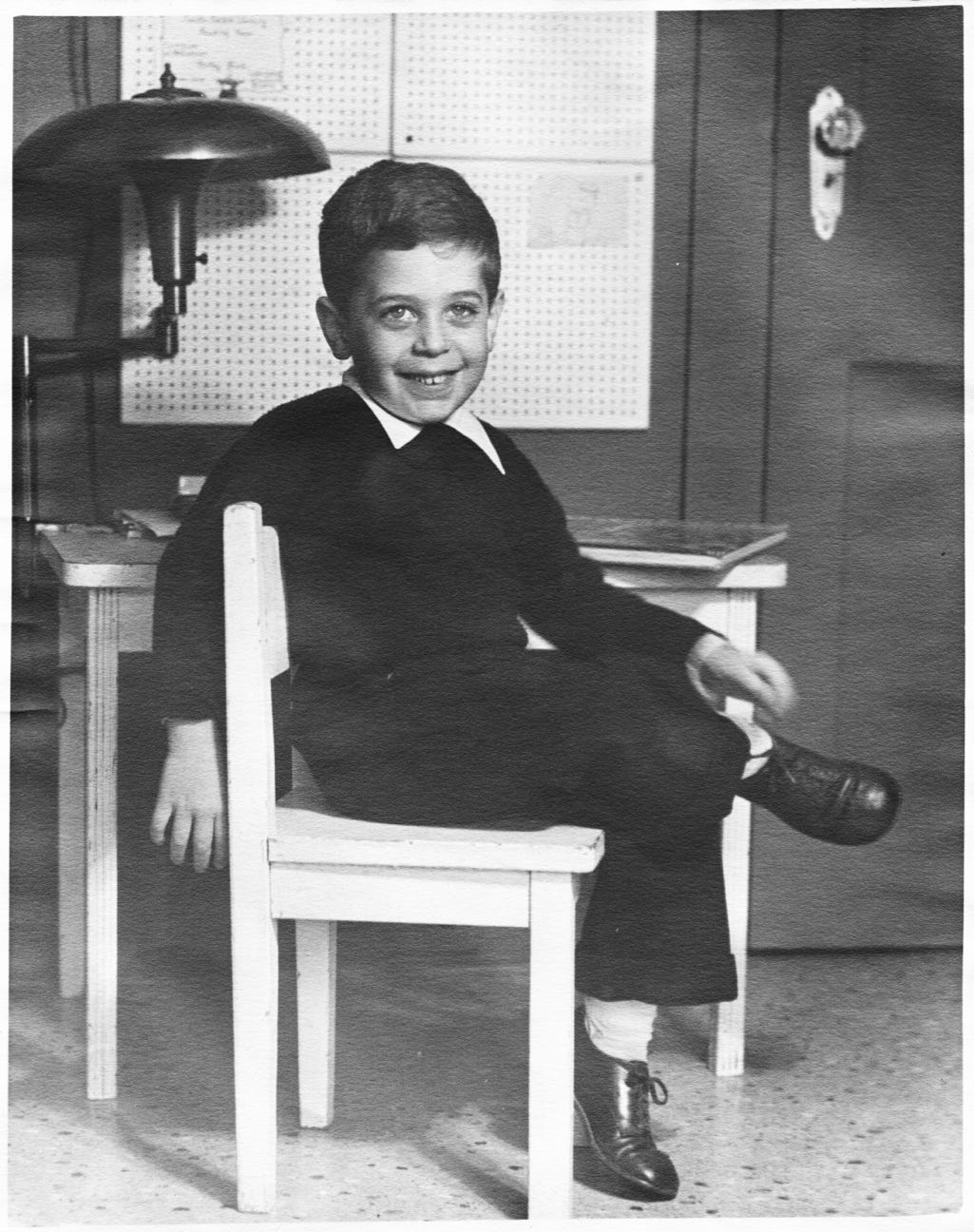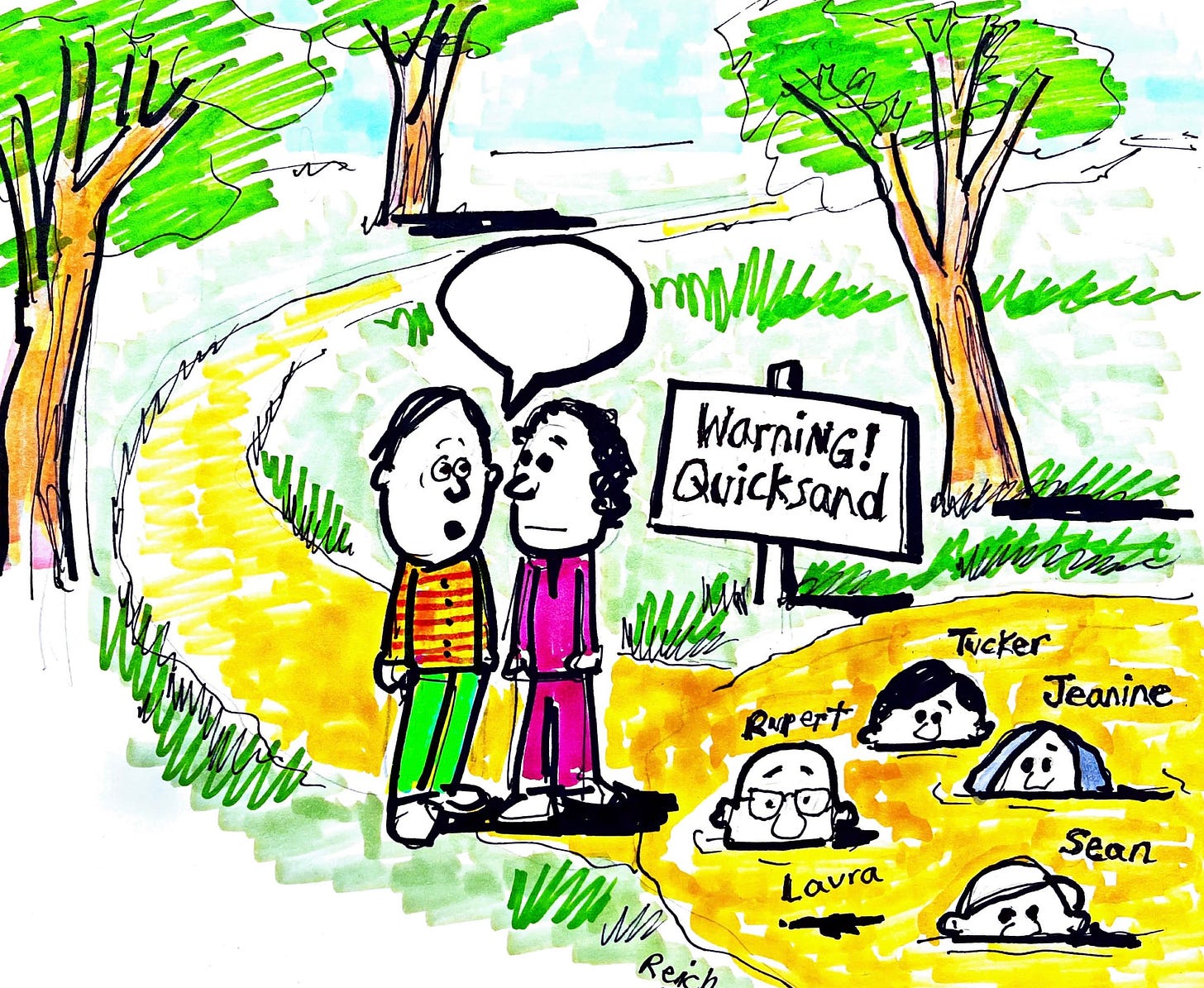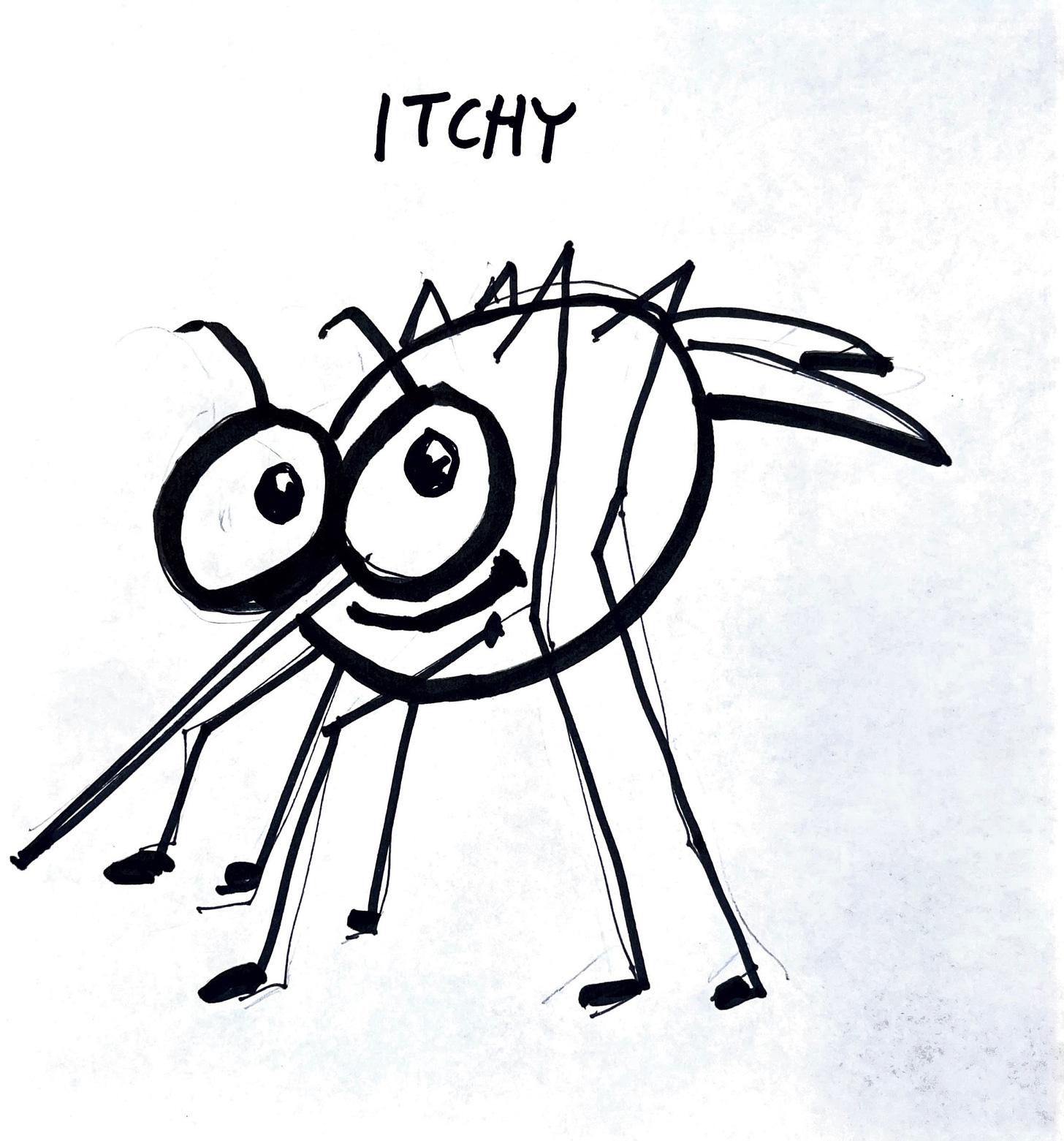Friends,
Some of you ask why I illustrate many Substack posts. Well, I’ve been drawing and writing ever since I can remember — the two have almost always gone together. It gives me great joy to share both with you.
Here’s an early photo of me (circa 1952) after a hard day writing and drawing.
By the way, that notebook on my desk is my first illustrated book. It was titled “The Adventures of Itchy the Mosquito” and had a print run of one.
It’s always been easier for me to write and draw than to do one or the other separately. Words and images flow together, at the same time.
When I say “draw,” I don’t mean anything more elaborate than a sketch or cartoon. I doodled my way through elementary school — drawing everyone from teachers to friends, anything I glimpsed out the classroom window, and just about any idea that floated into my head.
As a teenager, I came across a copy of the New Yorker and was excited to find cartoons on the same pages as serious content. No matter how heavy or intense the article, the cartoons added a bounce that somehow made the content easier to read.
At age 15, I began to submit articles and cartoons to the New Yorker and soon accumulated enough rejection slips to paper an entire wall of my bedroom.
I loved books and stories by James Thurber and E.B. White. Both combined great writing with lively cartoonish drawing.
My book publisher once let me illustrate the paperback version of Beyond Outrage, and a graphic publisher put out a collection of my drawings called Economics in Wonderland. Since co-founding Inequality Media, I’ve done a number of videos where I speak and draw.
But not until Substack have I found such a natural place to combine writing and drawing. Here’s a drawing I did for a post about the tyranny of stuff.
And here’s one for our weekly caption contest. (The winning caption for this one: “You know what your problem is? You worry about every little thing.”)
I usually start with a pencil sketch, on thick paper. Then I ink it in with a thin Sharpie and add a thicker Sharpie for emphasis. Then, if the subject suits, comes color. (I like bright colors with the look and feel of watercolor. Copic sketch pens are ideal.)
Most drawings take very little time. If they become too complicated or realistic, they pull attention away from the text.
I rarely begin with an essay or drawing nearly finished in my head. Instead, I let thoughts bubble up — loose and ill-formed at first, both verbally and visually.
Maybe something or someone has made me curious or angry, or provoked a memory, but I don’t know exactly what or who until I start sketching with words and images.
I may draw a path leading to quicksand, and then see democracy moving toward where it’s in danger of being swallowed up — and ask myself why. Is it Trump’s lies magnified by Fox News?
Or is the core problem big money?
I might begin writing about something in the news that catches my attention—say, a strike by Amazon warehouse workers — and start drawing Jeff Bezos with money coming out of his ears,
I especially enjoy sketching people who infuriate me — Tucker Carlson, Trump, Mitch McConnell, Elon Musk — because the cartoon portrayals allow me to exaggerate aspects of them that illustrate their character (Carlson’s fake furrowed brow, Trump’s vapid smile, McConnell’s double chins, Musk’s impetuous grin).
I sketch at the same table where my laptop sits, so I can refer back to what I’ve written and draw from it, literally and figuratively.
My laptop, sketchbook, Sharpies and Copic pens take up just about all the space on the table — not unlike the little table I started at sixty-odd years ago, where I produced “The Adventures of Itchy the Mosquito.”
Thanks, as always, for your thoughtfulness and encouragement.











I always enjoy your autobiographical posts. These personal essays reveal not only a very gifted person, but one who is (despite your many successes) a very humble public servant, which is rare, especially in the current state of such political savagery.
Thank you Dr. Reich.
I want to read THE ADVENTURES OF ITCHY THE MOSQUITO!